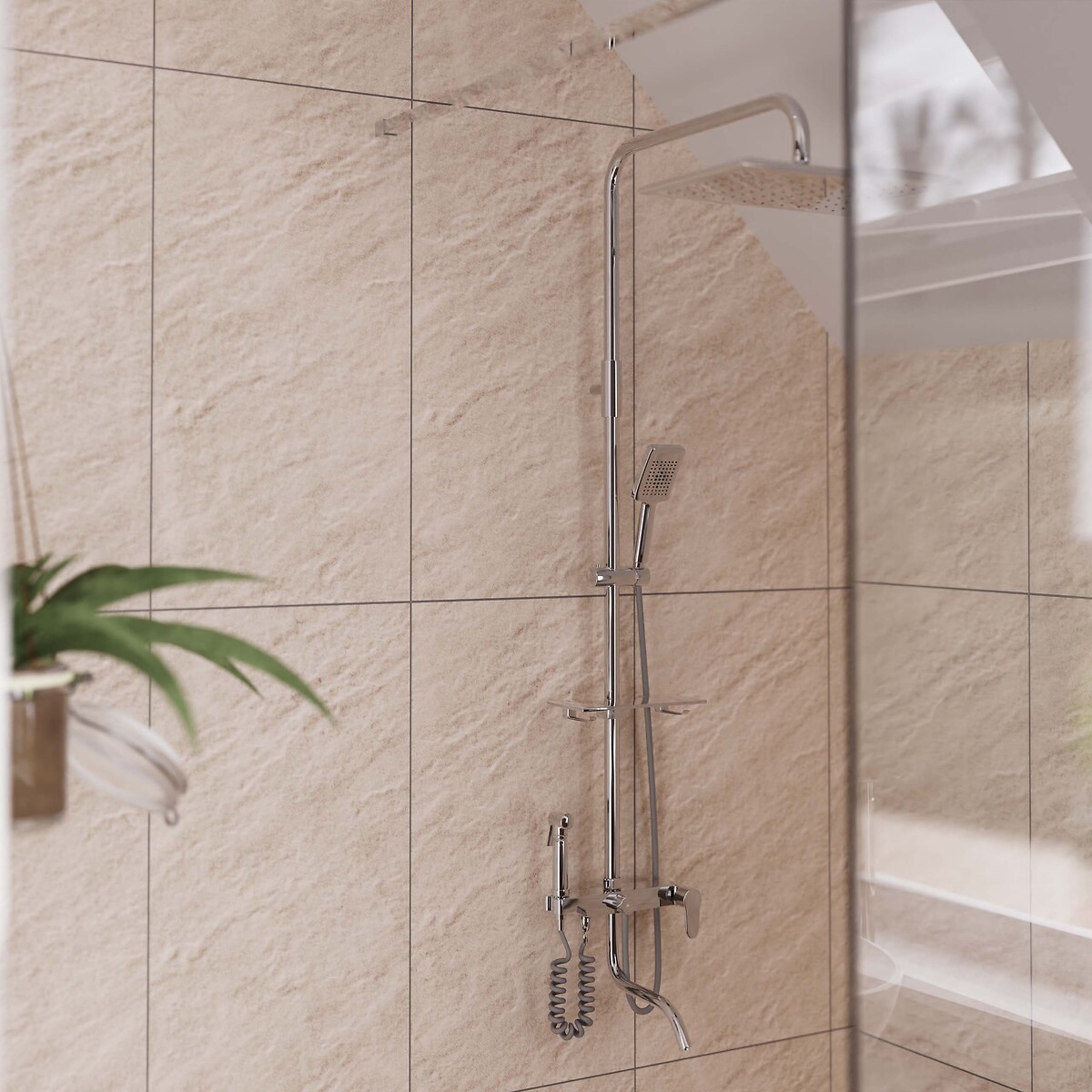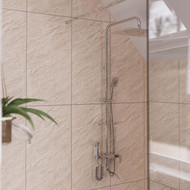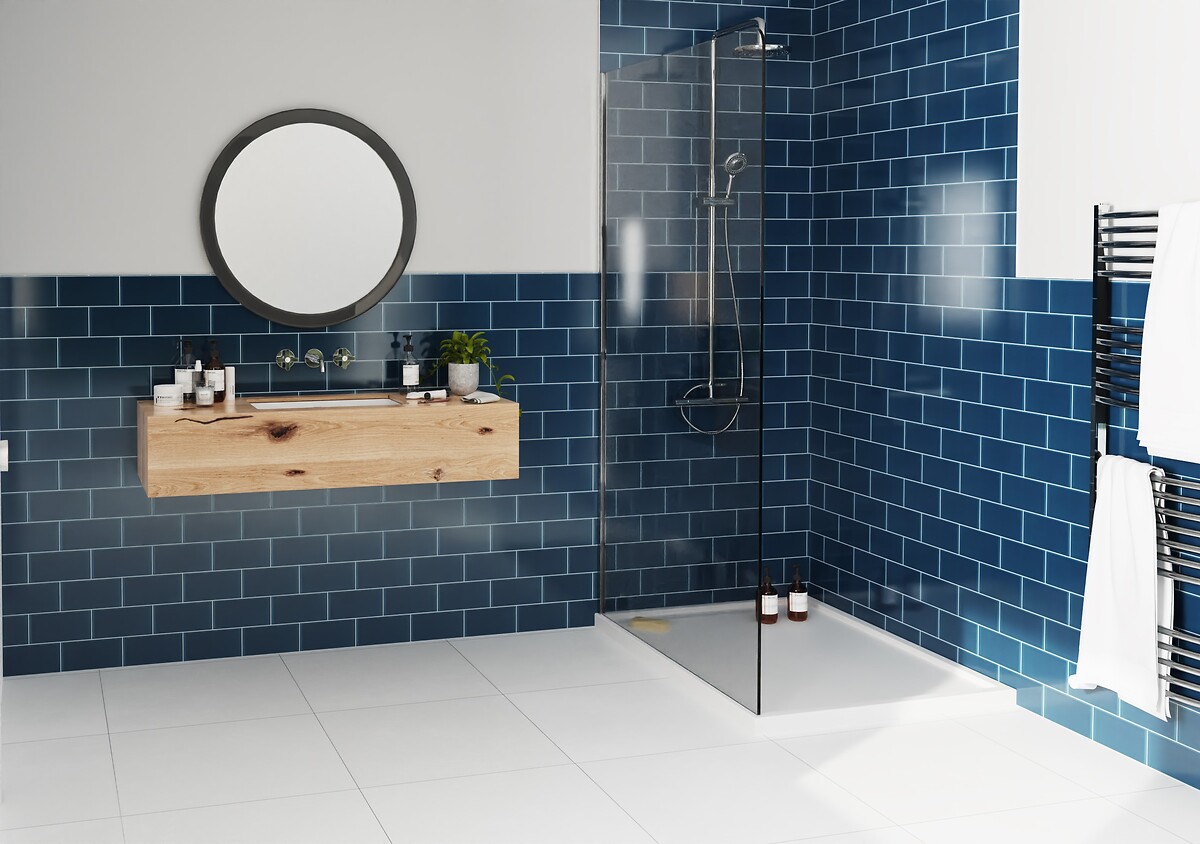Posted on Date 20th Dec 2023
How to waterproof a bathroom
While tiles for bathrooms are naturally waterproof, the same cant be said about the joints between your tiles.
Which is why we would always recommend when tiling any wet areas such as a bathroom to make sure to waterproof all walls and floors (also known as tanking) to avoid any water leaking through and causing damage to your property.
Using a liquid membrane underneath your tiles gives you the peace of mind of knowing that what you are fitting onto your walls will remain water resistant and that the only route for the water is down the drain.

Paint on waterproofing system
The best way of doing this is by using a paint on system for your bathrooms walls and floors. To tank them, we recommend using a Waterproofing System. They have been specifically created to make the job of waterproofing a wet area quick and easy.
Used prior to fixing tiles, a Waterproofing System ensures a watertight barrier preventing water penetration into moisture sensitive backgrounds such as plasterboard and may be applied to wall angles, corners, around pipe penetrations and structural fixtures.
Plus, they are suitable for use on a wide variety of surfaces such as backerboard, cement, concrete, plaster, plasterboard and sand rendering. Although originally designed for use with domestic showers, they can also be used in other areas which require waterproofing such as wet rooms and bathrooms.
Preparing your surface for tanking
Before applying your system, your surfaces must be sound and flat, so remove any old tiles, tile adhesive, plaster as well nails or screws. Any voids or gaps should be filled with suitable filler or sealant and allowed to dry.
If you have any cracks up to 1.5mm may be bridged should be covered with Corner Tape and Waterproof Coating. The coating should not be used to level out irregularities. If your shower tray is already in place, then make sure to apply coating and tape from the top level of the tray. If waterproofing prior to the fitting of a shower tray, apply coating and tape from floor level and across the floor if required.
How to waterproof your bathroom step by step guide
Step 1
The actual process of tanking really couldnt be simpler. First use a paintbrush to apply the Primer to shower area walls to the full height and leave until touch dry.
Step 2
Next apply a layer of Waterproof Coating with a separate paint brush to your walls that require tape such as corners, tray or floor junctions etc.
Step 3
While the Waterproof Coating is still wet, cut the Corner Tape to the required length and push into the wet layer of coating ensuring no voids are left beneath the tape.
Step 4
Then, form a continuous strip around the shower, slightly overlapping the shower tray. To form the corner section cut halfway up the tape and fold down and around to form corner. Press into the wet layer of coating.
Step 5
Next apply a second layer of the Waterproof Coating over the tape and remaining wall area up to the required height.
Step 6
Thats your walls done. Now its time to focus on your floors. Apply the Primer to the floor and leave until touch dry before applying the Waterproof Coating and any tape, applying coating where the walls and floor meet. If you have timber floors (or heavy-duty areas) we would suggest using a matting system, such as Durabase CI++ Matting. This acts as a waterproof and crack resistant membrane, helping to isolate the tile from the original surface.
Step 7
Press matting firmly into wet layer of coating, ensuring air pockets are removed. Then apply a second layer of Waterproof Coating over the matting to ensure complete coverage.
Step 8
All thats left to do now is leave the waterproofing to dry. 24 hours should be more than ample time before its time to apply a suitable tiling adhesive ready to start tiling!
Waterproofing completed, now lets look at those tiles you have been dreaming of! Check out our extensive range of bathroom floor tiles with varying styles like mosaic, terrazzo and materials like ceramic and porcelain!
Watch our video
Tile Warehouse has teamed up with hit YouTuber Proper DIY to create an easy-to-follow video showing you the best way to waterproof your bathroom ahead of tiling.
Need more information?
If you have any questions regarding tiling in your bathroom, then feel free to contact our Customer Services team using our web chat facility. They will be more than happy to help.





